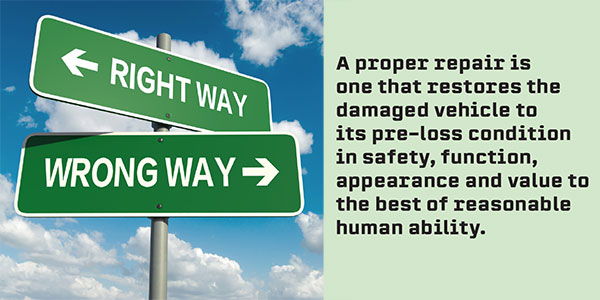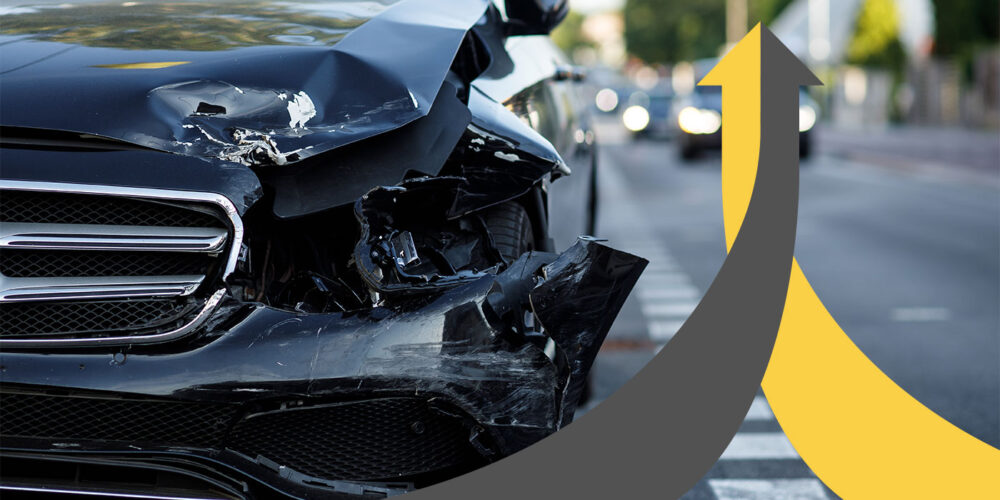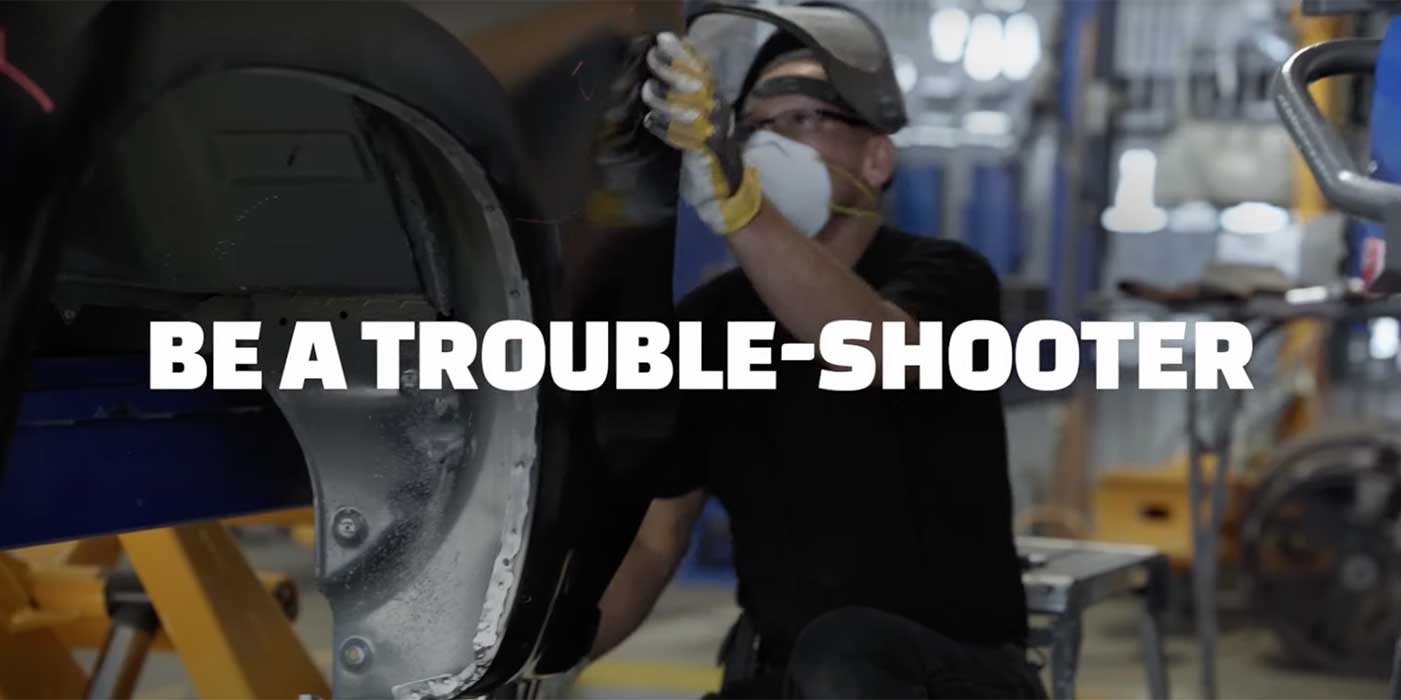Those who have read my articles and the shop owners I’ve helped over the years know what I’ve always told collision repairers: “Do The Right Things, In The Right Way, For The Right Reasons.”
Many situations pop up in the collision repair industry where the repairer’s professional opinion plays a significant role in the manner and thoroughness of performed repairs. In a perfect world, every repairer would make the right decisions in every repair. However, we don’t live in a perfect world, and it’s not always solely up to the repairer to make the decisions, as there are often outside forces that may influence them. Such influences may include the original manufacturer recommendations and mandates, customer of record, insurer interests, and laws and regulations. Furthermore, in addition to the legal boundaries, repairers are often confronted with ethical dilemmas regarding how to perform a repair.
The Right Way
So, what is the “right way” to perform a repair? It is my position (and that of many others) that a proper repair is one that restores the damaged vehicle to its pre-loss condition in safety, function, appearance and value to the best of reasonable human ability. Many might also say it’s adhering to the OEM procedures.
A “wrong way” would be one that would leave the driver and occupants in an unsafe position regarding post-repair collision energy management, reliability, and proper function and performance (handling, braking, acceleration, water, dust, exhaust leaks, etc.) as well as leave the repairer potentially facing significant liabilities.
Of course, the specific situation and expectations of others may play a huge part in just how a repair is performed and why. For example, let’s presume there is a customer who has a 10-year-old, low-mileage sedan that was purchased new and has remained in pristine condition and been regularly maintained with low miles and is likely worth $15,000 retail. A neighbor’s son accidentally fell against the vehicle while riding his bicycle, causing the handlebars to create a one-hour dent/gouge in the left rear quarter panel. No big deal — that is, until the repairer prepares a comprehensive repair plan following the OEM’s repair procedures.

Because there is no hard break line at the quarter’s sail panel or roof panel, this repair, per the OEM or paint manufacturer’s recommended repair procedures, would call for an “up and over” and necessitate refinishing the right and left side apertures and rockers (after the front and rear bumper covers, headlights and tail lamps, right and left fenders, all four right and left doors, necessary interior trim, with the windshield and rear glass being removed and reinstalled, which may call for replacement moldings and trim). What may have been a straightforward $750 or so repair has turned into a $15,000 to $20,000 repair that will no doubt cause this vehicle to be deemed a total loss, causing a financial loss to the vehicle’s owner, the repairer and the insurer too — because the salvage recovery may not be that good.
Scenarios like this one take place throughout the country on a regular basis and, as a result, increase the cost of insurance for all consumers. This creates an avoidable headache for the consumer (who generally is under-compensated for his or her totaled vehicle’s replacement value) and a hassle trying to find a suitable replacement for the right price.
At the end of the day, the vehicle owner may elect to simply cancel the claim and live with the damages, which isn’t fair to him or her but is a better solution than losing the vehicle over minimal damages and a high repair cost. Or, the customer may seek others who will provide some sort of repair that will save the vehicle even though it may not fully conform to the OEM mandates and recommendations. No doubt the involved insurer will gladly provide this customer with some names of local shops who will provide the services sought and may even offer a warranty.
Another Dilemma
Let’s look at this scenario a little more deeply. If the repair for a newer and more costly vehicle takes place, the repairer is confronted with yet another dilemma: making inner aperture areas appear as they had prior to the loss. This includes VIN and information labels located at the center post (hinge/lock pillars) that may not be available for replacement. Does the repairer merely clearcoat over them or take a photograph and remove them and provide the customer a copy of the photo for their records? Obviously, in either case, upon sale or trade-in, the loss of the VIN label would no doubt lessen the diminished value of the vehicle. Furthermore, the loss or diminution in value of the vehicle would be significantly compounded due to the extensive cost of the performed repair and the widespread areas of refinishing, causing further loss of factory warranties — not to mention the invasiveness of removing panels, dismantling assemblies and trim, and the potential for damage and glass breakage as well as the added costs of that. Also, the time needed to perform this repair in comparison to a simple localized repair would be substantial, incurring significant loss of use and/or rental costs and inconvenience.
So, what is “another way” to perform a repair? And is it ethical for a collision repairer to provide an alternative to the “right way” by suggesting another way to repair a vehicle? In this example, perhaps another way would be to repair the dent and blend the paint into the sail panel or along the roof line if a hard edge exists. Of course, you would need to explain the benefits and potential disadvantages of not following the paint manufacturer or OEM’s mandates and potential loss of warrantees as well as get a written authorization from the consumer to perform this kind of repair.
The Hippocratic Oath
The medical profession has a vow often referred to as “The Hippocratic Oath” that is an ethical code of conduct for physicians/practitioners that, in simple terms, means to “do no harm” when treating their patients. This code of ethical principles also applies to teachers of medicine and their students. This oath has been in existence since Hippocrates as far back as 375 B.C., was translated from Greek by Francis Adams in 1849 and has gone through frequent revisions since to adapt with changes and advancements in modern medical practices.
Let’s take a real-life example of “another way” involving the medical profession. Early on, when performing heart surgery for various heart-related ailments, the surgeon would need to “crack the chest” or cut down the breastbone (sternum) and separate the rib cage to access the heart (known as a midline sternotomy). This extremely invasive procedure has since been replaced with tiny incisions in the chest to access the heart through openings between the ribs — a much less invasive approach than traditional open-heart surgery. Today, doing open-heart surgery where not needed would not be in keeping with The Hippocratic Oath when a simpler, less invasive method that offers less pain, faster recovery and a significantly greater survival rate is available.
Due to the potential risks and liabilities in today’s collision repair industry, I firmly believe it is time for collision repairers to adopt a similar oath to abide by when servicing their customers who rely on and trust them, just as they trust and rely on those in the healthcare industry.
Over the years, I’ve developed an oath for my clients, and I am providing you the reader also with a copy to get your opinions and suggestions on whether this oath is beneficial to the industry and if you would like to see it adopted throughout the entire industry — on a voluntary basis, of course. This oath could be printed on a poster and displayed in your front office to show your customers your company’s and staff’s commitment to doing “The Right Things, In The Right Way, For The Right Reasons.” I look forward to your feedback:
Oath of Professional Ethics and Conduct
As an industry expert, I pledge these promises solemnly, freely and upon my professional honor:
- The safety of my customers will be my first and foremost consideration
- To have a sense of personal obligation to each individual consumer
- To make recommendations to the best of my training, ability and judgment
- I will only recommend work which I believe to be reasonable and necessary
- I will only charge fees/prices that I believe to be reasonable and competitive
- To perform high-quality repair services at a fair and just price
- Commit to lifelong pursuit of education to improve my abilities and service
- Conduct business in a professional and courteous manner at all times
- To employ and utilize the best skilled technicians obtainable
- To care and protect the vehicle and its contents to the best of my ability
- To acquire and make available the latest training to our technicians
- Uphold the highest standards and integrity of our industry and profession
- To always conduct myself as a true professional and in all circumstances
- To seek to expose and help to correct all known abuses within my industry
- To use only proven merchandise of high quality sold by reputable firms
- To list all parts and adjustments in the price charged for service rendered
- Commitment to teach other industry professionals who swear the Oath
- I will expose wrongdoing, errors and omissions as may be discovered
- I will not condone or attempt to hide errors and omissions
- To adhere to and follow all local, regional state and federal laws
- To apply established and accepted high-standard practices for proper repair
- At all times, I will practice my profession with conscience and dignity
- Inform and answer to the customer at all times relative to their repair
- Maintain facilities that are safe, clean and employee and customer-friendly
- Support my industry at the local, state and national levels














